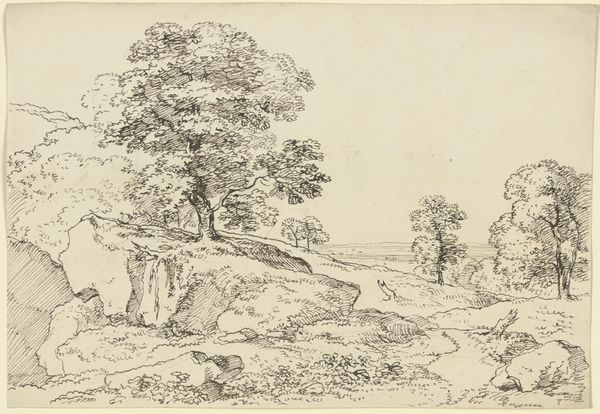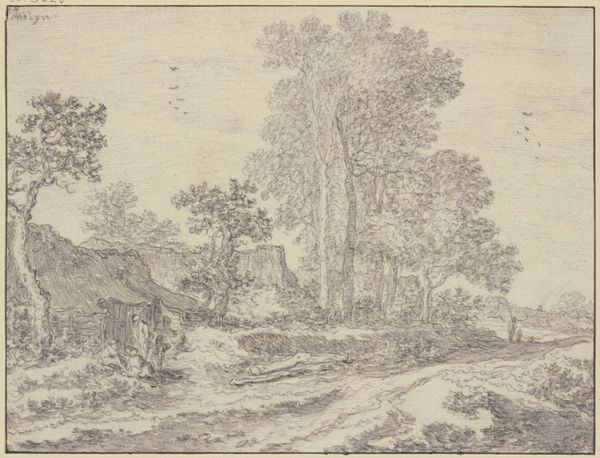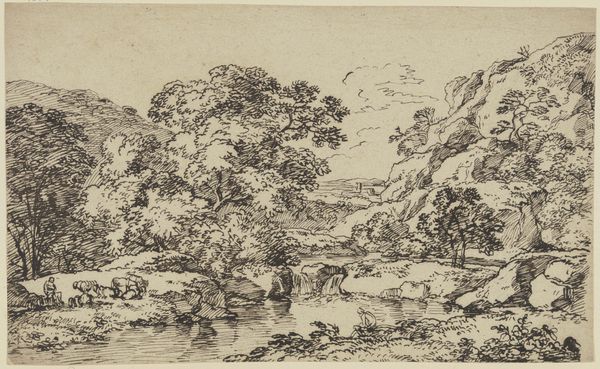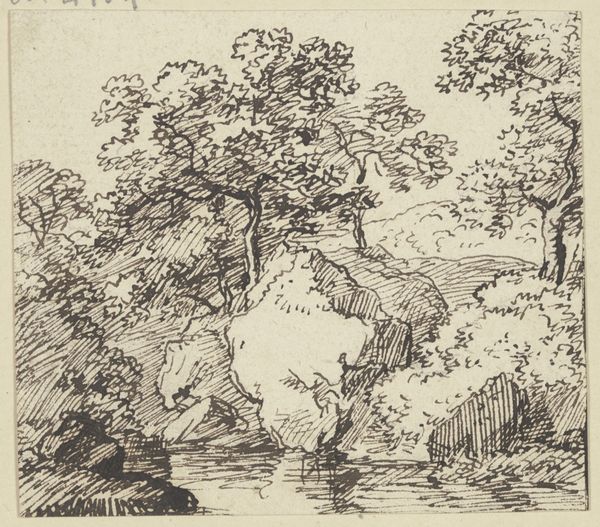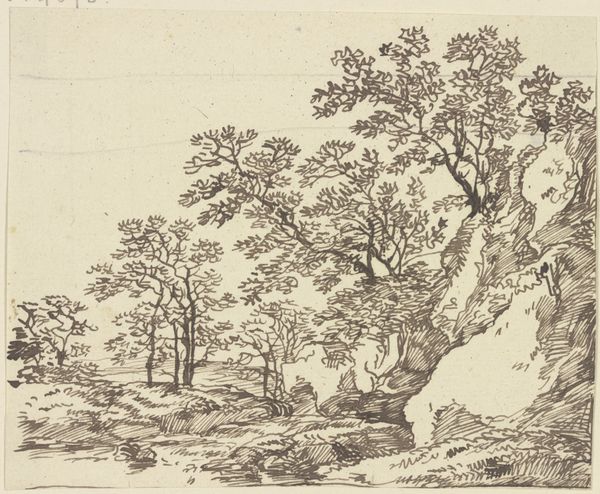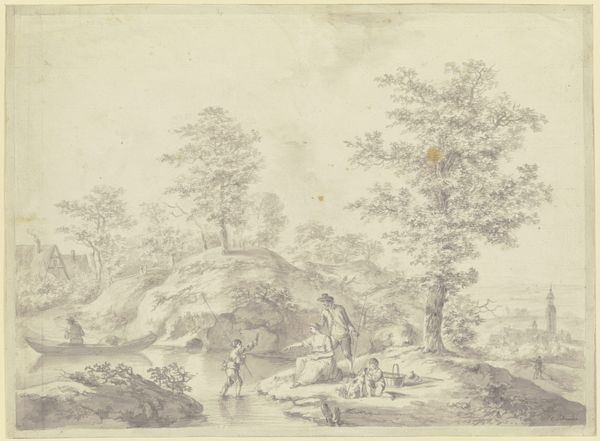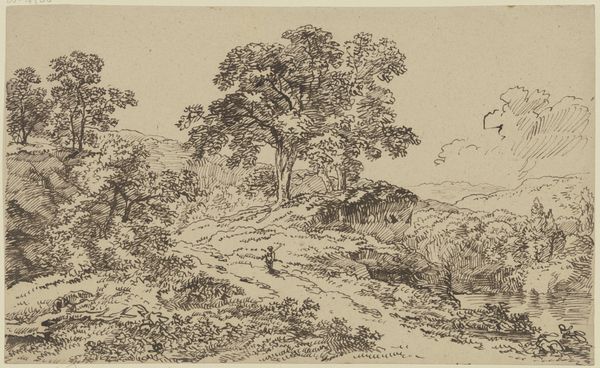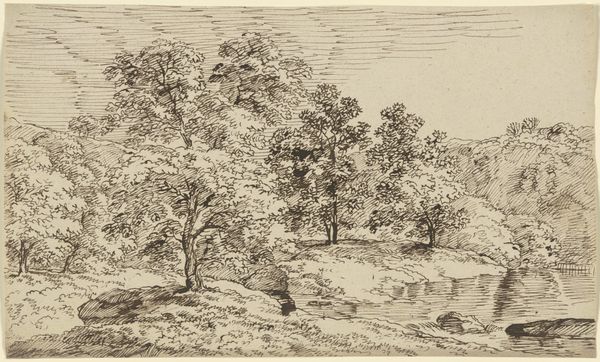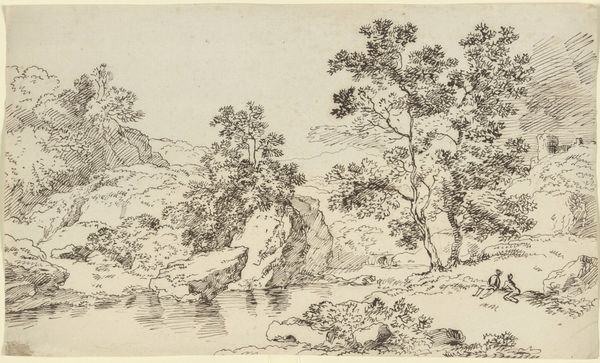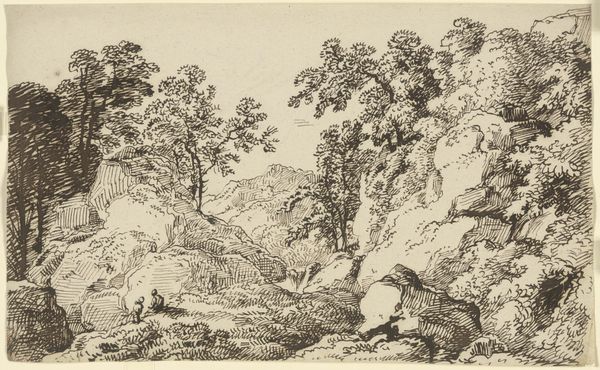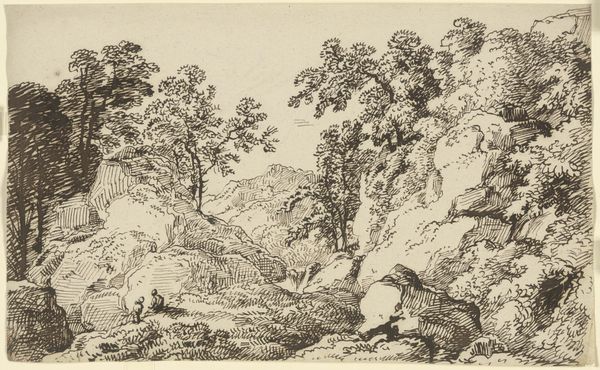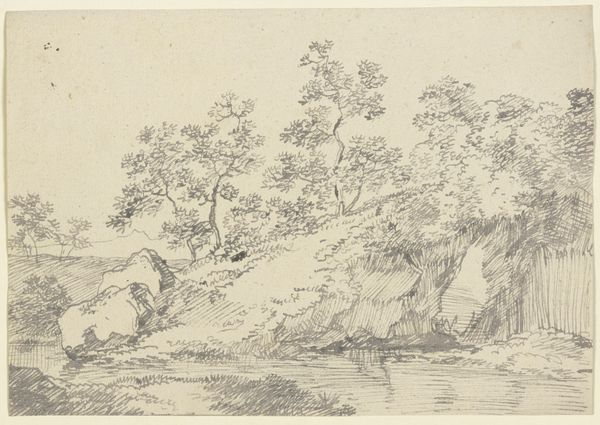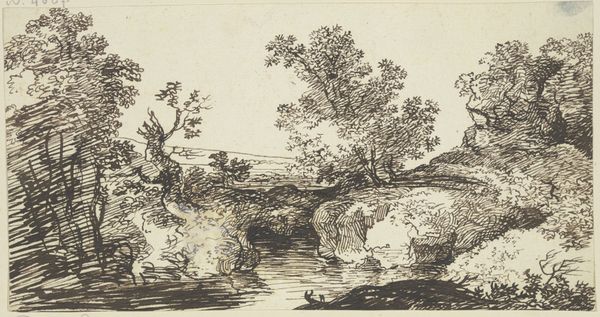
drawing, paper, ink, pencil, graphite
#
drawing
#
pen drawing
#
landscape
#
paper
#
ink
#
pencil
#
graphite
Copyright: Public Domain
Editor: Here we have "Landscape full of trees," a pen drawing by Franz Kobell, currently residing in the Städel Museum. I find the detail in this landscape so intricate for just pen, ink, pencil and graphite on paper. How do you approach something with so much detail made with such simple means? Curator: Considering this drawing through a materialist lens, I immediately think of labor. Notice the sheer quantity of marks made with graphite, ink and pencil. The artist painstakingly applied each one to build up the dense texture and tonal variations across the scene. Think about the artist’s hand, the hours spent applying pressure to the paper. This level of detailed drawing speaks to a specific kind of investment, a deliberate slowness of production, doesn't it? Editor: It certainly does, and there are clear variances of technique that are consistent throughout the work. Would this process have implications relating to the broader social context of the time? Curator: Absolutely. Consider who had access to materials like quality paper, graphite, ink, and the time required to create such a piece. These were not universally available. Furthermore, how does the landscape itself reflect social values? Are we seeing an idealized vision of nature, divorced from the realities of agricultural labor and resource extraction? Who benefits from such a vision? Editor: That’s fascinating! I hadn't considered the landscape itself as a constructed ideal reflecting societal privilege, not just an innocent snapshot. Curator: Precisely! And examining the work in this light allows us to question those seemingly innocent representations. Ultimately, art making, its creation, its material presence, reflects society. Editor: Well, I will certainly view art with a closer consideration of the labour and access required for its creation from now on!
Comments
No comments
Be the first to comment and join the conversation on the ultimate creative platform.
